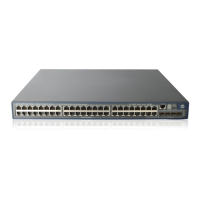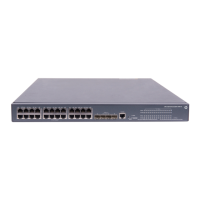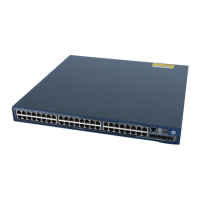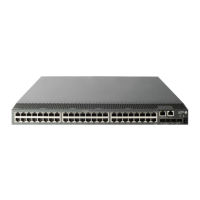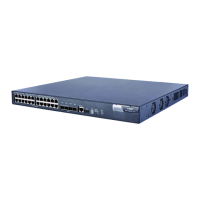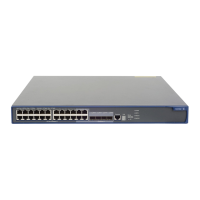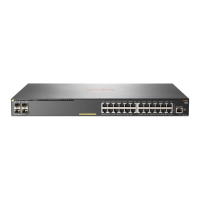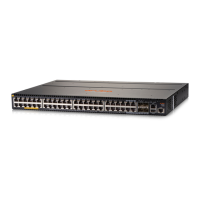138
To do… Use the command… Remarks
Enter public network PIM view or
VPN instance PIM view
pim [ vpn-instance vpn-instance-name
]
—
Configure the BS period
c-bsr interval interval
Optional
For the default value, see the
note under this table.
Configure the BS timeout timer
c-bsr holdtime interval
Optional
For the default value, see the
note under this table.
NOTE:
bout the BS period:
• By default, the BS period is determined by the formula “BS period = (BS timeout – 10) / 2”. The
default BS timeout is 130 seconds, so the default BS period = (130 – 10) / 2 = 60 (seconds).
• If this parameter is manually configured, the system will use the configured value.
bout the BS timeou
timer:
• By default, the BS timeout value is determined by the formula “BS timeout timer = BS period × 2 +
10”. The default BS period is 60 seconds, so the default BS timeout timer = 60 × 2 + 10 = 130
(seconds).
• If this parameter is manually configured, the system will use the configured value.
CAUTION:
In configuration, make sure that the BS period value is smaller than the BS timeout value.
Disabling BSM semantic fragmentation
Generally, a BSR periodically distributes the RP-set information in bootstrap messages within the PIM-SM
domain. It encapsulates a BSM in an IP datagram and might split the datagram into fragments if the
message exceeds the maximum transmission unit (MTU). In respect of such IP fragmentation, loss of a
single IP fragment leads to unavailability of the entire message.
Semantic fragmentation of BSMs can solve this issue. When a BSM exceeds the MTU, it is split to
multiple bootstrap message fragments (BSMFs).
• Upon receiving a BSMF that contains the RP-set information of one group range, a non-BSR router
updates corresponding RP-set information directly.
• If the RP-set information of one group range is carried in multiple BSMFs, a non-BSR router updates
corresponding RP-set information upon receiving all these BSMFs.
Because the RP-set information contained in each segment is different, loss of some IP fragments will not
result in dropping of the entire message.
The function of BSM semantic fragmentation is enabled by default. Devices not supporting this function
might deem a fragment as an entire message and learn only part of the RP-set information. Therefore, if
such devices exist in the PIM-SM domain, you need to disable the semantic fragmentation function on the
C-BSRs.
Follow these steps to disable the BSM semantic fragmentation function:
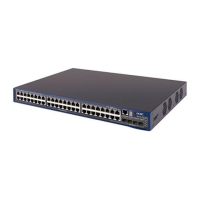
